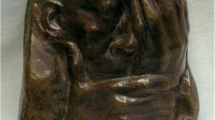Summary
The golden mean, Φ, has been applied in diverse situations in art, architecture, and music, and although some have claimed that it represents a basic aesthetic proportion, others have argued that it is only one of a large number of such ratios. We review its early history, especially its relationship to Mount Meru of Piṅgala. We present multiplicative variants of Mount Meru that may explain why the octave of Indian music has 22 micronotes (śruti), a question that has perplexed musicologists for a long time. We also speculate on the neurophysiological basis behind the sense that the golden mean is a pleasing proportion. We conclude that perhaps aesthetic universals do not exist, and it is cultural authority and tradition that creates them, although they may be shaped by “universals” associated with our cognitive systems.
Subhash Kak is professor and head of computer science department at Oklahoma State University at Stillwater, USA. His areas of interest include history of mathematics, music, and information theory.
Access this chapter
Tax calculation will be finalised at checkout
Purchases are for personal use only
Similar content being viewed by others
References
Buenconsejo, José S. (ed.): A Search in Asia for a New Theory of Music. University of the Philippines, Centre for Ethnomusicology Publication, Quezon City (2003).
Burt, Warren: Developing and Composing with Scales Based on Recurrent Sequences. Proceedings ACMC (2002). http://www.iii.rmit.edu.au/sonology/ACMC2002/ACMC2002_Web_Proceedings/123-132_Burt.pdf
Cartwright, J. H., Gonzales, D. L., Pero, O. and Stanzial, D.: Aesthetics, Dynamics, and Musical Scales: A Golden Connection. Journal of New Music Research 31, 51–68 (2002).
Clough, John, Douthett, Jack, Ramanathan, N., and Rowell, Lewis: Early Indian Heptatonic Scales Recent Diatonic Theory.Music Theory Spectrum 15, 36–58 (1993).
Ingalls, Daniel, Masson, Jeffrey and Patwardhan, M. V. (tr.): The Dhvanyaloka of Anandavardhana with the Locana of Abhinavagupta. Harvard University Press, Cambridge (1990).
Kak, Subhash: Early Indian Music. In Buenconsejo (2003). http://www.ece.lsu.edu/kak/manila.pdf
Kak, Subhash: Recursionism and Reality. Louisiana State University, Baton Rouge (2004).http://www.ece.lsu.edu/kak/RReality.pdf
Knuth, Donald E.: The Art of Computer Programming. Addison-Wesley, Reading, MA (2004).
Livio, Mario: The Golden Ratio: The Story of Phi. Broadway, New York (2002a).
Livio, Mario: The Golden Ratio and Aesthetics. Plus Magazine, November (2002b).
Maceda, José: Introduction: A Search in Asia for a New Theory of Music. In Buenconsejo (2003).
McClain, Ernst: The Myth of Invariance. Nicolas Hayes, New York (1976).
Nooten, B. Van: Binary Numbers in Indian Antiquity. Journal of Indian Philosophy 21, 31–50 (1993).
Singh, A. N.: On the Use of Series in Hindu Mathematics. Osiris, No. 1, 606–628 (1936). http://www.anaphoria.com/hindu.pdf
Singh, Parmanand: The So-called Fibonacci Numbers in Ancient and Medieval India. Historia Mathematica 12, 229–244 (1985).
Weber, A.: Uber die Metrik de Inder. Harrwitz and Gofsmann, Berlin (1863).
Wilson, Ervin M.: The Scales of Mt. Meru. (1993). http://www.anaphoria.com/meruone.pdf
Wilson, Ervin M.: Piṅgala’s Meru Prastara and the Sum of the Diagonals. (2001). http://www.anaphoria.com/MERU.pdf
Zeising, Adolf: Neue Lehre von den Proportionen des menschlichen Korpers. (1854).
Author information
Authors and Affiliations
Corresponding author
Editor information
Editors and Affiliations
Rights and permissions
Copyright information
© 2009 Springer Science+Business Media, LLC
About this chapter
Cite this chapter
Kak, S. (2009). The Golden Mean and the Physics of Aesthetics. In: Yadav, B., Mohan, M. (eds) Ancient Indian Leaps into Mathematics. Birkhäuser, Boston, MA. https://doi.org/10.1007/978-0-8176-4695-0_7
Download citation
DOI: https://doi.org/10.1007/978-0-8176-4695-0_7
Published:
Publisher Name: Birkhäuser, Boston, MA
Print ISBN: 978-0-8176-4694-3
Online ISBN: 978-0-8176-4695-0
eBook Packages: Mathematics and StatisticsMathematics and Statistics (R0)




